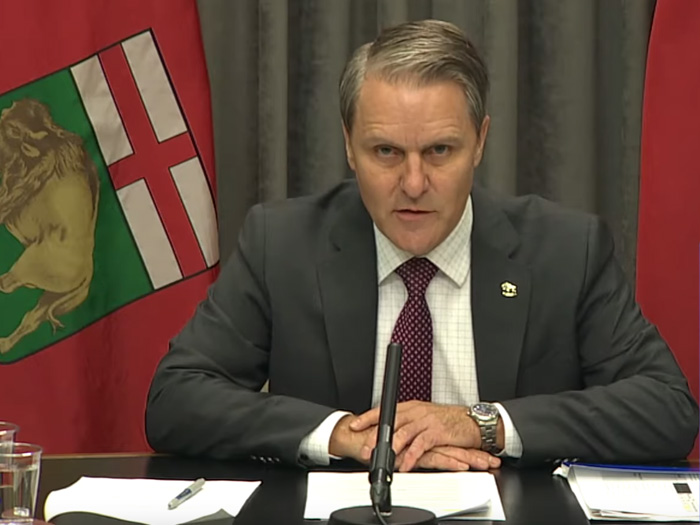The Manitoba government has released its 2022-23 mid-year fiscal and economic report and shows that the province’s fiscal position is improving even as it responds to ongoing pressure.
“While uncertainty persists on the global and Canadian economic landscapes, our government continues to make progress on helping families make ends meet, strengthening health care, making Manitoba more competitive, and building strong and safe communities,” said Finance Minister Cameron Friesen.
The Manitoba 2022/23 Mid-Year Report – Fiscal and Economic Update forecasts a deficit of $193 million, a $355-million improvement compared to the deficit of $548 million projected in Budget 2022 and consistent with first quarter results.
Revenue is forecast at $20.5 billion, an increase of $1.1 billion over the budget estimate of $19.4 billion. The driving factor in the projected increase is higher net income for government business enterprises, in particular a forecasted $625-million improvement at Manitoba Hydro due to high water levels.
The minister added that Manitoba, like other Canadian provinces, has seen a significant increase in taxation revenue this fiscal year. However, given the rising potential for an economic downturn in 2023, the government is remaining focused and disciplined facing the current global environment of economic uncertainty. Over the past year, Manitobans have experienced record-high inflation and rising interest rates, with six Bank of Canada rate increases in the last nine months. The province will continue to respond in this fiscal year to make additional strategic investments, determine next steps to address changing economic conditions, and focus on moving Manitoba forward, the minister noted.
Expenditures are projected to be $20.7 billion in 2022-23, $774 million higher than the budget forecast of $19.9 billion. The increase reflects new investments to improve the health-care system, support for Ukrainian temporary residents, and implementation of economic recovery and affordability measures including the Family Affordability Package, the Minimum Wage Adjustment Program and the Food Security Fund. More announcements with respect to continued support for these important initiatives will be announced early in the new year, the minister said.
“Strong employment growth and a solid rebound in the agricultural sector after last year’s drought propelled the provincial economy forward in 2022. Manitoba’s projected economic growth ranks third highest in the country and best amongst non-resource-based provinces,” said Friesen. “Although the Manitoba economy is facing headwinds moving forward, there is cause for optimism. Most year-to-date economic indicators in 2022 are trending upwards in Manitoba, underscoring the strength of our province’s economy.”
The provincial unemployment rate continues to decrease and is now at 4.6 per cent, among the lowest rates in the country. Inflationary pressures have eased slightly, falling to 8.4 per cent growth in October, after peaking in June at 9.4 per cent growth year-over-year at a near 40-year high, the minister noted.
Manitoba’s net debt to gross domestic product (GDP) ratio is forecast to be 33.5 per cent in 2022-23, 2.4 percentage points lower than the 35.9 per cent forecast presented in Budget 2022. The minister noted this improvement is due to the decreased deficit and the stronger GDP outlook this year.
The mid-year report expects Manitoba’s real GDP to slow to 1.4 per cent in 2023 from 3.7 per cent in 2022.
The Manitoba economy is not immune to global economic forces, such as aggressive increases in interest rates, near-record inflation rates, the prolonged Russian invasion of Ukraine and persistent supply chain disruptions, the minister added.
“Economic forecasters are projecting the provincial economy to decelerate in 2023, though at a slower pace relative to other provincial economies,” said Friesen. “We will continue our work to ensure Manitoba remains on track and make investments to support Manitobans as needed in the months ahead.”




